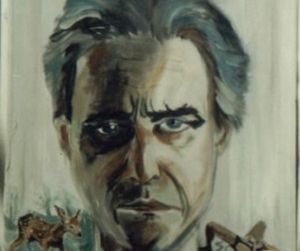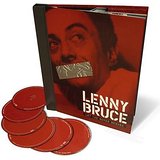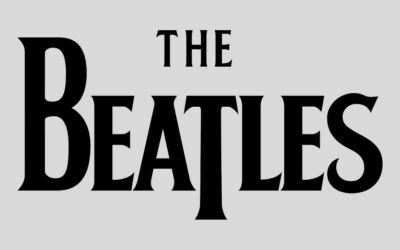The only performance ever caught on film of John Lennon and the Plastic Ono Band
John Lennon & The Plastic Ono Band Live In Toronto ’69 is a rare look at one of the world’s most influential popular artists at a pivotal moment in his career. Shout! Factory has a DVD of this event and EMI Music Marketing also re-issued a vinyl album of the concert.
Filmed on the eve of the release of the Abbey Road LP — the last Beatles album to be recorded (although Let It Be was the last to be released) — this is the only performance ever caught on film of John Lennon and the Plastic Ono Band. Captured by Academy Award®-nominated director D.A. Pennebaker (Don’t Look Back, Monterey Pop), this concert film serves as one of the important and historical documents in the career and life of John Lennon.
On a phone invitation from record producer, songwriter and rock ‘n’ roll publicist Kim Fowley, John Lennon and wife Yoko Ono, after a brief consultation with journalist Ritchie Yorke at the Apple Records offices, hopped on a plane from England with guitarist Eric Clapton, bassist Klaus Voormann and drummer Alan White to travel to 1969’s Toronto Rock ‘N’ Roll Revival, showcasing some of Lennon’s early rock ‘n’ roll musical heroes — among them Bo Diddley, Jerry Lee Lewis, Chuck Berry and Little Richard.
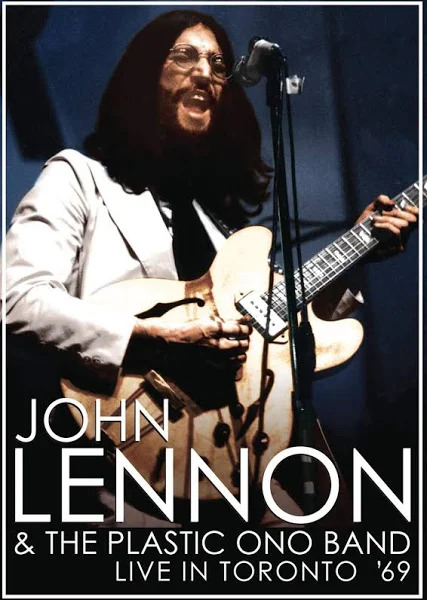
Fowley recalls the time and the place in a recent wide-ranging interview in Los Angeles
Q: You were the Master Of Ceremonies in Toronto, Canada, where John Lennon debuted The Plastic Ono Band on stage, and your voice is heard doing the introduction of Lennon and friends on the subsequent Live Peace In Toronto gold album that was culled from The Rock ‘n’ Roll Revival held there at Varsity Stadium in September of 1969.
A: It was a concert at The Varsity Stadium. Bo Diddley, Junior Walker & The All Stars, Tony Joe White, Alice Cooper, Cat Mother and the All Night News Boys, Lord Sutch, Chicago Transit Authority, Chuck Berry, Jerry Lee Lewis, Gene Vincent–I was his record producer at the time–Little Richard, Doug Kershaw and The Doors.
Q. How did you get the gig?
A: I know some of the promoters involved, like John Brower, Ken Walker and Thor Eaton, who later also produced a 1970 train tour of Canada with several rock acts, including The Band, Janis Joplin, Grateful Dead and Buddy Guy. It’s now a DVD titled Festival Express.
I got the Toronto job because I was the voice of the Love-Ins in L.A. 1966, ’67, ’68 and ’69. I did some pop festival shows with The Doors, The Seeds, Jimi Hendrix and The Jefferson Airplane. I did all those shows and knew what to do with a large audience like 100,000 people. Ritchie Yorke, Billboard editor in Canada and a contributor to Rolling Stone and NME at the time, knew about me and persuaded the promoters to hire me. $4,000.00 and a plane ticket. I also got a hotel room a week before the gig. My job was not only to announce the date but also be a consultant and tell them how things were going. We had a problem: We sold 2,000 tickets before and no one was interested in coming to Canada from America via Detroit and the other cities. At the time, halfway through the week I met with the promoters, John Brower, Ken Walker and Thor Eaton of Eaton’s Department Store who financed the thing. It was my idea to bring John Lennon over of which John Brower executed the transaction. But I was the consultant/master of ceremonies. And I was there suggesting the people to be there. They threw in Cat Mother and the All Night News Boys and somebody else came up with Lord Sutch, Chicago and Alice Cooper, who also backed Gene Vincent. That mixture was great because they were hillbillies and red necks from Arizona and Gene was king of the rednecks in terms of music content. They knew all the songs. They put on the blue jeans, grease and shades and showed up to do it. Gene had done stadiums before.
I told them to get John Lennon to show up and act as an emcee. I said, “The Beatles have just broken up, and John Lennon is the most competitive in the most competitive group. So call him up and invite him and Yoko on a chartered plane, which Mr. Eaton can provide so they can sit at the show on a Royal Box kind of thing. I wrote out the script, I had Derek Taylor training, and had met The Beatles a couple of times in England, once when John and Paul (McCartney) came to the hotel I was staying and promoting the soon to be released Pet Sounds’ Beach Boys album. I knew the mentality to get a Beatle to show up.
So, John Brower called Apple Records. John Lennon got on the phone and heard the pitch in two minutes. Music journalist Ritchie Yorke was in the room with them and he further explained who I was and about the promoters and the event. It was at a time when The Beatles would be at the Apple office. Originally John was asked if he wanted to come for free and sit there and enjoy seeing his heroes. And he replied he wasn’t a member of Royalty and would rather join in and be a part of it and didn’t require any money. “I wouldn’t feel right coming down there as a member of The Royal Family just sitting there. I would want to play. Is it OK to play? I want to try out this thing I’m putting together with Eric Clapton, Yoko Ono, Allen White and Klaus Voorman.” But Lennon did require film rights and recording rights. John Lennon was in the music business. He was in show business. Allen Klein showed up and D.A. Pennebaker showed up with the film unit and this whole thing was recorded and a gold album came out of it. So they sent the plane and John and the band jammed and rehearsed on the way across the Atlantic.
Yoko got sick on the way in. In the morning, all the Apple people from New York under Allen Klein’s supervision were already bringing in the recording equipment. I don’t think this was anyone exploiting John Lennon. I think John Lennon was a bright guy who called his then manager, Allen Klein, and told him to “do the paper” with these promoters and make sure “let’s make a live album.” The recording stuff was all brought in and then the documentary filmmaker D.A. Pennebaker came to film it. Richard Pennebaker and I talked. Only 2,000 tickets were sold before Lennon was formally announced. That’s a bad pre-sale. But people started driving across the border and all over the world, pre-internet, then DJ’s got on the radio, and everyone wanted to see what John Lennon would do after the Beatles. Russ Gibb the DJ from Detroit and involved with the Grande Ballroom helped get the word out that stirred the ticket sales.
Who is the king of Rock ‘n’ Roll?
Q: Any incidents or problematic performers at the venue?
A: One thing that happened was Chuck Berry, Bo Diddley, Jerry Lee Lewis and Little Richard all came up to me at the same time backstage and said “We all think all four of us are the King of Rock ‘n’ Roll and how you going to solve that problem in the introduction?” So, one became the King of jungle rock, one became the King of across the tracks rock, somebody became the grammar King rock etc. and suddenly everybody had slightly different items of introductions. They had concerns about billing since each one wanted to be the King of Rock ‘n’ Roll that night so I had to amend each mention. The visual of all four of them in front of me: egomaniacs whose time had passed demanding to be Kings Of Rock ‘n’ Roll. And I was in a purple suit, white shoes and a green shirt and under age 30 and felt superior to all of them.
Q: If John Lennon and the Plastic Ono Band was the seismic moment that night, was there another act that performed that ‘made the pizza wiggle’ as guitarist Elliot Ingber would say.
A: At that Toronto Pop Festival in 1969 it was Tony Joe White backed by Booker T. & The M.G’.s at that stadium, leading up to the Doors and John Lennon & The Plastic Ono Band. They blew everybody off. Seeing Tony Joe White with that Stax Band was like if Elvis (Presley) had stayed at Sun Records in 1969 and had a better version of Creedence Clearwater Revival behind him. With keyboard. Remember, Tony Joe White is a great guitar player, besides a great songwriter, so you had the two guitarists, bass, drums and keyboardist up there, and it reinforced the musical relationship that Toronto and Memphis always had. The soul and gospel thing. It hits you. Even though Tony Joe White is from Louisiana, but by then he had been out. It was the devil’s music in cinemascope live on stage.
It showed that Booker T and the M.G.’s could work in a stadium. Al Jackson the drummer was tremendous. I mean, Charlie Watts probably studied him. The Doors had to follow everything. The Doors were excellent that night. They had to be with all that going on. They closed the show and had to follow John Lennon & the Plastic Ono Band with Eric Clapton. That was hard. That was the night that Chuck Berry came out and wanted to jam and Jim Morrison said to him in front of the crowd, “You won’t let young guys jam with you so we’re not gonna let you jam with us because you’re not nice to young musicians.”
Remember, everyone was in a foreign country. And remember, Canada is not America. It looks like it is because it’s on the same continent but it’s a different country. Remember, most people in L.A. bands aren’t from L.A. They don’t have a geographical link anyway. Because they are all carpetbaggers in California. And then, here they all are in Canada. And all the white guys wouldn’t dare strut with all the black Gods around who invented the stuff that the white people stole from. White people stole rock ‘n’ roll from black people. And there were too many rock pioneers around the room for any white guy to start strutting and might have gotten his arse kicked. So the strutting was not going on or the camaraderie. And musically, everybody was good that day. People were fascinated to see a Beatle in a non-Beatle situation.
We showed up at noon at the place. It was a pretty brutal situation because a police official came up to me and said, “If there is a riot here, and you don’t stop it you will never leave Toronto, Canada alive.” “Yes sir.” That was pressure. The promoters said to me, “When you do the live album make sure to include our names in the intro.” They also were to pay me the other half of the $4,000.00 promised. So I had to juggle. Then, a guy dressed in blue right out of a Brian De Palma movie comes up to me and says in a serious voice, “I am Mr. Blue. Take me to John Lennon now.” He had blue shades, blue pants, blue boots, blue jacket and blue shorts. I got a very bad feeling about him. So I told the police to immediately to remove him from the event. He looked like Robo Cop. I always thought Mr. Blue was a prototype Mark David Chapman.
John Lennon’s Performance Anxiety
Q: And the actual time just before John and the group came on stage?
A: So I see the Plastic Ono Band. Lennon was nervous. “Are you all right?” “Yes.” 20,000 people showed up and the big moment comes and the lights are blinding. Everything is on and John Lennon summons me to the apron of the stage on the side by the canopy. I was dressed in a purple suit. He was in a white suit. This was not the time to have a MIDEM publishing-like discussion.
Then John threw up. And he started to cry. He said “I’m terrified.” Imagine if you were in The Beatles as the only band you’ve only been in your life. The first time you are to step onstage with people that weren’t in The Beatles. You’re about to go on stage with your wife, a friend, another friend and a complete stranger with songs you had learned acoustically on an airplane on the way over from England with jet lag. You would be terrified. “Do something so the kids don’t know how scared I am.” He was that vulnerable.
That’s all he knew. “Do something! Please do something so people won’t know how afraid I am to go out there.” He went ahead of his band. They were behind him. He was in a bad way.
Q: So naturally, like Lee Marvin in an episode of “M Squad,” you saved the day and supplied the remedy, Dr. Kim.
A: I came up with the following. So, I had seen a movie a decade before, in Catholic grade school, “Our Lady Of Fatima” based on The Blessed Virgin appearing in front of a bunch of kids in a cow pasture in Portugal in the early 20th century. They had candles and matches lit to honor her presence. So I figured, and told everybody in the place, they all think John Lennon is God and this is a religious experience and a religious experiment. I said to myself, why don’t I take this to the religious level by subliminally recreating “Our Lady Of Fatima” with fire and say the introductory words… “Plastic Ono Band please say hello to John and his friends with your matches and your lighters.” Kim Fowley can be credited with inventing the idea of lighting matches and lighters at rock concerts in 1969 at Toronto. It wasn’t as much a stalling tactic for John to compose himself but to put an amber hue over the entire throng and suddenly it was a religious spectacle. Because John Lennon had a religious position in the culture. And so did the Blessed Virgin, so in my mind there was no difference between our Lady Of Fatima and the Plastic Ono Band showing up, and he was dressed in white, by the way.
So the request to Varsity Stadium to please turn off the lights and when I said the word Plastic Ono Band at the count of three I want everybody to light matches simultaneously. It was a welcome in a very friendly beatified way for John and his friends.
On the live album you’ll hear “Get your matches ready. Brower and Walker …Present The Plastic Ono Band…” 20,000 matches were lit. It was a beautiful amber glow and everyone let out a collective gasp and at that moment, Lennon, who was a Beatle, realized there’s the moment that will take away from the nervousness of the moment and they went up to the stage and went right into “Money.” And it was clear sailing for him and them all the way until the end. It seemed like an hour. Yoko sang in a bag.
So that helped the spiritual subtext of the event. I had talked to Lennon three years earlier but in 1969, everybody had gotten scruffier after the Mod 1966 and the English version of psychedelic culture and Syd Barrett came along and everybody got dirtier. The guys got dirtier and the girls all threw their bras away and didn’t shave their armpits or their legs. So everybody was getting more organic. John was a Beatle and larger than life, so nobody was aware if he was tall or short. Yoko was in the band and went into the bag at a certain point.
Simple rock and roll songs where sloppiness is a charm
Q: Run down the set list?
A: They just went on and played. They didn’t sit there and kibbitz or talk to anybody. The repertoire performed fit the theme of the event which was a rock ‘n’ roll revival booking and appropriate to open with “Blue Suede Shoes” and “Money.” And they did “Dizzy Miss Lizzy” from the Larry Williams’ songbook.
I had met Williams the year before in Hollywood at an Epic Records party in Hollywood. He along with Johnny “Guitar” Watson who in 1966 or ’67 produced my friend Chris Darrow’s band, Kaleidoscope at Columbia Studios. Chris in the very early ‘70s met Lennon one time at Liberty Records in Hollywood. I knew Eddie Cochran, produced Gene Vincent, and Chris Darrow saw Ritchie Valens live and recorded with the Crickets, Buddy Holly’s band. Like Lennon, who met Gene Vincent, Chuck Berry, Elvis Presley and Little Richard, so on some level we’re all in this very exclusive club together.
That night Plastic Ono Band did simple rock and roll songs where sloppiness is a charm, it’s nighttime outside, and people are drunk and stoned. Klaus Voorman on bass was fine. He had been in Manfred Mann before and did one of my songs. Alan White was a member of Yes at the time or a bit later. Eric Clapton had been in Blind Faith the year before and I was at their L.A. concert at the Forum. I had known Eric from England at The Richmond Athletic Club days when he was in The Yardbirds. And, I had met him again when Cream was forming. I had also jammed a couple of months earlier onstage with Blind Faith at The L.A. Forum, where in the dressing room, Eric asked me to come onstage if I knew the words to “Sunshine Of Your Love.” For the encore I went out there with Bonnie Bramlett and didn’t know the words. I was bluffing, so I said into the microphone “Legalize Marijuana.” And they turned off the sound. And that’s how we got away at the encore. So Eric was friendly. He knew Jack Bruce had covered one of my songs during his earlier Manfred Mann days for an Australian EP, Long Hair Unsquare Dude Called Jack, that I had sung on the last Hollywood Argyles single, an anti-hippie song on Chatahootchie Records, which went top ten by the way in Saigon. At any rate, Eric and I connected.
Q: Lennon on stage…
A: John Lennon was a Beatle. You heard that voice and there he was…. A Beatle. It was Gandhi and a human jukebox showing up.
The rhythm guitar driving the engine of a rock and roll band
Q: And what about Lennon’s guitar playing that evening?
A: As far as John’s guitar playing that night there are four people who were great rhythm guitars players in the history of rock and roll: Eddie Cochran, John Lennon, Joan Jett and Keith Richard. The four supplied the pulse of whatever band they were in and they could build a whole rock and roll universe around the pulse of their rhythm guitar playing. And their guitar was attached to their voice. And those four people, it’s beyond lead guitar and flashy stuff. It’s the rhythm guitar driving the engine of a rock and roll band. Jimi Hendrix did something else in his trio as the Jimi Hendrix Experience as well as the Band Of Gypsies. He took guitar playing somewhere else. In terms of strict guitar, bass and drums four piece or five piece and that’s where I rate the four of them.
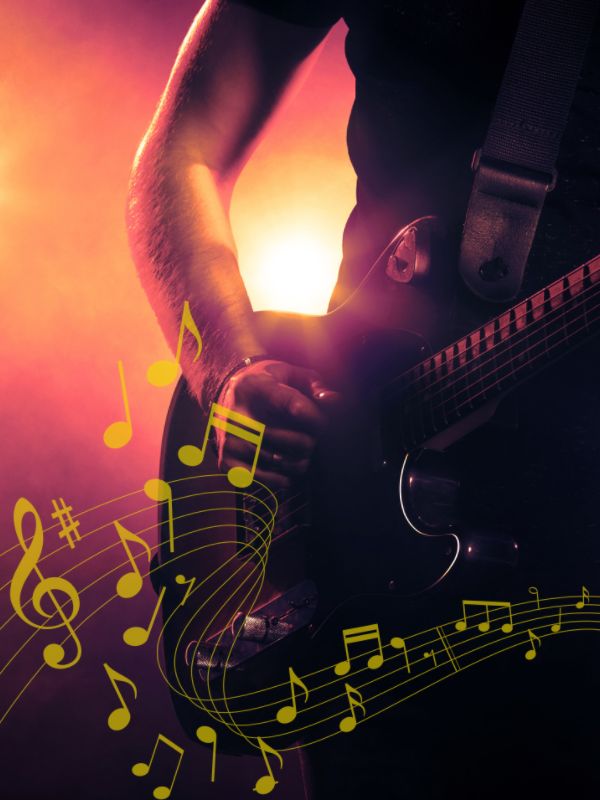
Post Show with John and Yoko
Q: And the next day post-show encounter with John and Yoko.
A: The next day at Thor Eaton’s house where John and Yoko were staying with the Plastic Ono Band. I was sitting outside with the two promoters and they were happy. “Kim Fowley you really earned your money. You’re gonna be on the album, maybe they’ll be a movie someday. Isn’t life grand.” Then, Eric Clapton came out.
And he said, “John and Yoko want to talk to you.” Eric escorted me to the sitting room of this mansion and a very quiet John Lennon who was dressed very casual was sitting on the floor on a Gandhi position, looking at Yoko who was sitting in a chair, and Klaus was next to them. And Eric said, “John and Yoko, Kim is here.” “Kim Fowley.” And I was delighted. “Thanks for introducing us…” We shook hands. He was very gracious to me and Klaus Voorman was in the room and so was Alan White.
And I had always promised myself in my rock and roll journey, when I was in the middle of it, that I should always ask the right questions because I got the historic part of it. Because previous to this in 1965 I met Bob Dylan and asked him his concept of songwriting, and he said, “Story telling and asking questions.” And before that in 1963 I asked Brian Wilson at Gold Star studio one day, “What is the basis of your songwriting?” And he said, “Well, school is nine months a year and the summer holidays are three months and you write about that and getting in trouble with your parents.”
So I had to ask the question to John Lennon. “Why did the Beatles breakup?” The whole room stopped, and Lennon looked at me and said, “May I give you an example?” “Yes.” “It has nothing to do with the wives and the women we married.” He said the group was based on us re-inventing our favorite records. I said give me an example? He said. “You know, ‘Why Don’t We Do It In The Road?’ We were improvising on Canned Heat and it was our message to Canned Heat and Norman Greenbaum who had ‘Spirit In The Sky’ at the time. When you do that type of music put more humor into it. We liked Canned Heat but didn’t think they had enough humor. So we wrote that song as taking the Canned Heat formula and doing something else with it. When The Beatles stopped reworking or improving on the formulas of their favorite songs that’s when we ceased being a band. Because that’s what we did. Because we improved on formulas that we loved of our favorite records. We stopped listening to records and improving on the formulas, the techniques and expanding, and that’s when we ceased being a band.”
So I had to ask the question to John Lennon. “Why did the Beatles breakup?” The whole room stopped…
What that meant to me was that the Beatles were the ultimate expanders and derivative detectives of the essence of songs. In Hamburg they would play hours every night and must have analyzed why a Chuck Berry or Little Richard song worked and when they started writing their own songs those were techniques they employed. And the other thing that John didn’t mention was that BBC Radio at the time would play all kinds of music next to each other. You could hear Little Richard, Hank Williams, and Kenny Ball back to back. You could hear Julie Andrews singing “The Sound of Music” and then Gary U.S. Bonds right after that. So those guys had this tremendous musical palette to listen to and then if they started doing covers it was obvious perhaps. So Bo Diddley and Maurice Chevalier were equal to them.
So when John said to me that they stopped improving on the formula of their favorite records, he was enjoying the fact that he could go on stage and do something without whatever the restriction of being a Beatle was. He didn’t say there was a restriction. He didn’t say it, but it was like playing football after you leave Manchester United team and you go play a football game in the park with your friends from the neighborhood or pub. It’s gonna be different if you’re gonna be David Beckham than if you’re in a jersey out on the pitch, or the field, you know? He hadn’t played music outside the Beatles. The last time he played as the Plastic Ono Band was that December at the Lyceum in England when it was billed as the Plastic Ono Supergroup.
That’s when the Beatles stopped being The Beatles. He didn’t mention all the things they’ve written about since. To him the Beatles ended because they didn’t want to reinvent music they liked anymore. I told him to have a nice trip back. Goodbye. Never saw him again.
—
Originally Posted 2009



